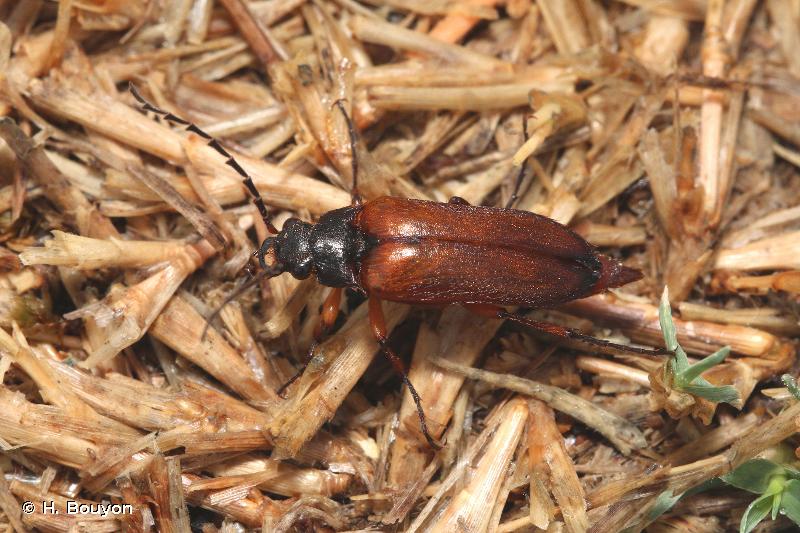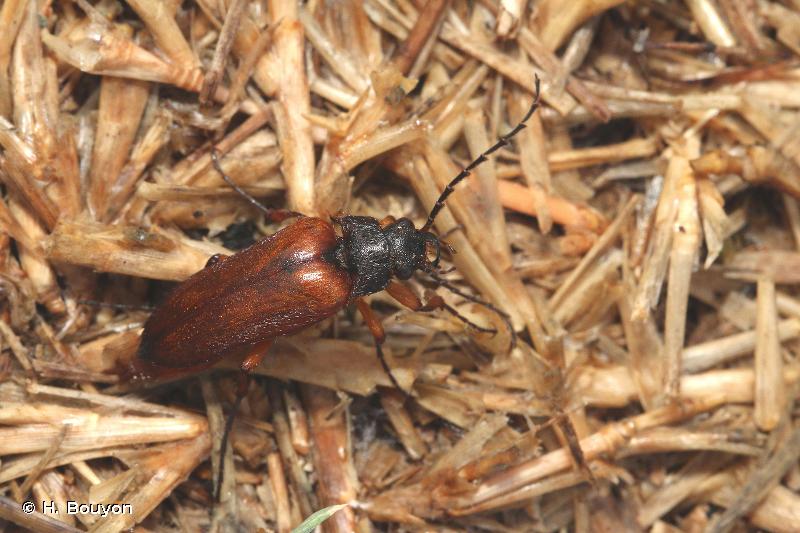
cd_nom

| Author : H. Bouyon |
 |
To get the picture, please visit:
Hervé BOUYON
email : herve.bouyon@wanadoo.fr
Any reuse of one or more photographs on this site is subject to an authorization request from the author.
Link to the Code of Intellectual Property (Legifrance)

| Author : F. Chevaillot |
 |
To get the picture, please visit:
Fred CHEVAILLOT
Moulin de Castor
La Maynobe
12550 COUPIAC
06 51 19 18 32
09 88 28 31 26
www.insecte.org
email : fred.chevaillot@wanadoo.fr
Any reuse of one or more photographs on this site is subject to an authorization request from the author.
Link to the Code of Intellectual Property (Legifrance)

| Author : H. Bouyon |
 |
To get the picture, please visit:
Any reuse of one or more photographs on this site is subject to an authorization request from the author.
Link to the Code of Intellectual Property (Legifrance)

| Author : A. Artero |
 |
To get the picture, please visit:
Armel Artero
inpn@mnhn.fr
Legend: Mâle
Any reuse of one or more photographs on this site is subject to an authorization request from the author.
Link to the Code of Intellectual Property (Legifrance)

| Author : A. Artero |
 |
To get the picture, please visit:
Armel Artero
inpn@mnhn.fr
Legend: Mâle antennes
Any reuse of one or more photographs on this site is subject to an authorization request from the author.
Link to the Code of Intellectual Property (Legifrance)
Taille :
Mâle 16-21 mm, femelle 19-24 mm.
Diagnose :
Mâle : corps large, peu convexe, entièrement fauve assez luisant avec la tête noire et le pronotum plus ou moins taché de noir. Apex élytral à pubescence noire fine et peu visible. Les antennes sont fines et dépassent le milieu des élytres. Mandibules grandes et saillantes, bien visibles. Le pronotum est très fortement transverse, à angles postérieurs pointes obtuses. Les pattes sont fauves avec les tarses très longs et fins.
Femelle : corps large, assez convexe, en entier d'un roux ferrugineux luisant. Les élytres sont raccourcis et déhiscents à l'apex qui forme un ovale aigu. Les antennes et les tarses sont très courts et robustes, adaptés à une vie souterraine.
La larve est filiforme et cylindrique (de type "ver fil-de-fer"), jaune orangée avec la tête et le dernier segment plus colorés, le dernier segment plus épais que le reste du corps et arrondi à son extrémité.
Identification : Assez facile.
Confusions possibles :
Les autres Cebrio ne se rencontrent pas en Corse.
Périodes d'observation (adultes) : Août à octobre.
Biologie-éthologie :
La larve est terricole et se nourrit de racines. La femelle adulte ne sort pas du sol et est très rarement observée. Le mâle émerge en fin d'été ou en automne à l'occasion des premières fortes pluies qui mettent fin à la sécheresse estivale. Il vole au crépuscule et la nuit à la recherche des femelles.
Biogéographie-écologie :
Milieux ouverts des plaines et collines de Corse et de Sardaigne.
Références :
Portevin G., 1931. Histoire naturelle des Coléoptères de France. Tome II : Lamellicornia, palpicornia, Diversicornia. Paris : Lechevalier, 542 p.
Porta A., 1929. Fauna Coleopterorum Italica. Vol. III : Diversicornia. Piacenza : Stabilimento Tipografico Piacentino, 466p.
Hervé Bouyon(),2020
Continental
Metropolitan France
Overseas
Marine
Metropolitan France
Overseas
The map presents a summary at the 10 x 10 km grid of the observation data for the species transmitted to the SINP. These data have been subjected to validation filters.
The map presents a reference distribution layer of the species at the scale of departments and marine sectors. The presence and absence data were established by expertise within a network of partners. This reference distribution is used in the validation process of the SINP data at the INPN level.
Corresponds to a report on the basis of at least one observation proved within a period of 10 years (20 years for little-known invertebrates) preceding the year and no presumption of extinction since obtaining the last data nor doubt on reproductive and implemented nature of this population. For migratory species, the presence indicated concerns areas of reproduction.
This status is based on one or more of the following criteria:
This point covers the absence, more difficult by nature to demonstrate than presence. This status is based on one or more of the following criteria:
This status must be assigned to a department in which the presence of the species is casual.
Particular case of absence due to a proven extinction less than a half century ago (older disappearances are treated as "no probable or definite").
In the state of knowledge, we can not comment on the presence or absence in the current department. This is the default status when not comprised in one of the previous categories or whenever there is doubt.
The map shows the global distribution of the species based on GBIF data (Global Biodiversity Information Facility).
